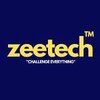Filter interviews by
Enncon Synergies Interview Questions and Answers
7 Interview questions
Air conditioning systems work by removing heat from indoor air and transferring it outside, cooling the air in the process.
Air conditioning systems use refrigerant to absorb and release heat.
The refrigerant circulates between the indoor and outdoor units, absorbing heat indoors and releasing it outdoors.
The indoor unit blows air over cold coils to cool it, then circulates the cooled air throughout the space.
The ou...
An air conditioning system is a technology that cools and dehumidifies indoor air for comfort and/or to maintain a specific temperature.
Air conditioning systems use refrigerants to absorb and release heat.
They consist of components such as compressors, condensers, evaporators, and expansion valves.
Examples include central air conditioning systems, window units, and split systems.
Heating, Ventilation, and Air Conditioning
HVAC stands for Heating, Ventilation, and Air Conditioning
It is a system used to provide heating and cooling services to buildings
HVAC systems control the temperature, humidity, and air quality in a building
Examples of HVAC equipment include furnaces, air conditioners, and ventilation systems
Sensible heat is heat that causes a change in temperature, while latent heat is heat that causes a change in state.
Sensible heat is the heat that can be felt and measured with a thermometer.
Latent heat is the heat absorbed or released during a change of state without a change in temperature.
Examples of latent heat include the heat absorbed during evaporation of water or the heat released during condensation of ste...
Yes, a heat load sheet is a document used to calculate the amount of heating or cooling required for a space.
Gather information on the building's dimensions, insulation, windows, and occupancy
Calculate the heat gain or loss from each component using relevant formulas
Sum up the total heat load to determine the HVAC system capacity needed
Include factors like climate, equipment, and ventilation in the calculations
AHU stands for Air Handling Unit. It is a device used to regulate and circulate air as part of a heating, ventilation, and air conditioning (HVAC) system.
AHU is responsible for filtering, heating, cooling, humidifying, dehumidifying, and distributing air throughout a building.
It typically consists of a blower, heating or cooling elements, filters, dampers, and sound attenuators.
Examples of AHU include rooftop unit...
Types of chillers include air-cooled chillers, water-cooled chillers, absorption chillers, and centrifugal chillers.
Air-cooled chillers use air to remove heat from the refrigerant.
Water-cooled chillers use water to remove heat from the refrigerant.
Absorption chillers use a heat source to drive the refrigeration cycle.
Centrifugal chillers use a rotating impeller to compress the refrigerant.
Enncon Synergies Interview Experiences
4 interviews found
I appeared for an interview in Dec 2024.
(2 Questions)
- Q1. Techical round about hvac
- Q2. Techical round about hvac
Interview Preparation Tips
I applied via Recruitment Consulltant and was interviewed before May 2023. There were 2 interview rounds.
They give it to me HVAC related questions
(5 Questions)
- Q1. They ask me about previous job. And HVAC system.
- Q2. What is air conditioning system?
- Ans.
An air conditioning system is a technology that cools and dehumidifies indoor air for comfort and/or to maintain a specific temperature.
Air conditioning systems use refrigerants to absorb and release heat.
They consist of components such as compressors, condensers, evaporators, and expansion valves.
Examples include central air conditioning systems, window units, and split systems.
- Q3. Working principle of Air conditioning system?
- Ans.
Air conditioning systems work by removing heat from indoor air and transferring it outside, cooling the air in the process.
Air conditioning systems use refrigerant to absorb and release heat.
The refrigerant circulates between the indoor and outdoor units, absorbing heat indoors and releasing it outdoors.
The indoor unit blows air over cold coils to cool it, then circulates the cooled air throughout the space.
The outdoor...
- Q4. What is AHU and How it Work?
- Ans.
AHU stands for Air Handling Unit. It is a device used to regulate and circulate air as part of a heating, ventilation, and air conditioning (HVAC) system.
AHU is responsible for filtering, heating, cooling, humidifying, dehumidifying, and distributing air throughout a building.
It typically consists of a blower, heating or cooling elements, filters, dampers, and sound attenuators.
Examples of AHU include rooftop units, pa...
- Q5. Types of Chiller?
- Ans.
Types of chillers include air-cooled chillers, water-cooled chillers, absorption chillers, and centrifugal chillers.
Air-cooled chillers use air to remove heat from the refrigerant.
Water-cooled chillers use water to remove heat from the refrigerant.
Absorption chillers use a heat source to drive the refrigeration cycle.
Centrifugal chillers use a rotating impeller to compress the refrigerant.
Interview Preparation Tips
I applied via Job Portal and was interviewed in Mar 2023. There were 3 interview rounds.

(2 Questions)
- Q1. Salary expectation
- Ans.
I expect a competitive salary based on my experience and industry standards, ideally between $70,000 and $90,000 annually.
My research indicates that HVAC Estimation Engineers typically earn between $70,000 and $90,000 annually.
I have over 5 years of experience in HVAC estimation, which I believe justifies a salary on the higher end of that range.
I am open to discussing benefits and bonuses that could complement the bas...
- Q2. Joining date possible
(3 Questions)
- Q1. Full form of HVAC
- Ans.
Heating, Ventilation, and Air Conditioning
HVAC stands for Heating, Ventilation, and Air Conditioning
It is a system used to provide heating and cooling services to buildings
HVAC systems control the temperature, humidity, and air quality in a building
Examples of HVAC equipment include furnaces, air conditioners, and ventilation systems
- Q2. What is sensible and latent heat?
- Ans.
Sensible heat is heat that causes a change in temperature, while latent heat is heat that causes a change in state.
Sensible heat is the heat that can be felt and measured with a thermometer.
Latent heat is the heat absorbed or released during a change of state without a change in temperature.
Examples of latent heat include the heat absorbed during evaporation of water or the heat released during condensation of steam.
- Q3. Do you know how to make heat load sheet?
- Ans.
Yes, a heat load sheet is a document used to calculate the amount of heating or cooling required for a space.
Gather information on the building's dimensions, insulation, windows, and occupancy
Calculate the heat gain or loss from each component using relevant formulas
Sum up the total heat load to determine the HVAC system capacity needed
Include factors like climate, equipment, and ventilation in the calculations
Interview Preparation Tips
I applied via Approached by Company and was interviewed before Jun 2021. There were 2 interview rounds.

(4 Questions)
- Q1. About HVAC System , site installation process, Site management
- Q2. About HVAC System description .
- Q3. Described about HVAC system
- Q4. Salary discussed and finialled directly
Interview Preparation Tips
Top trending discussions






Interview questions from similar companies

I applied via Company Website and was interviewed in Jan 2021. There was 1 interview round.
Interview Questionnaire
6 Questions
- Q1. What about yourself
- Q2. Java developer
- Q3. About java
- Q4. Working experience
- Ans.
I have over five years of experience in software development, focusing on web applications and agile methodologies.
Developed a full-stack web application using React and Node.js, improving user engagement by 30%.
Collaborated with cross-functional teams to implement Agile practices, resulting in a 20% increase in project delivery speed.
Led a team of developers in migrating legacy systems to cloud-based solutions, enhanc...
- Q5. About hobby
- Q6. Communication way
Interview Preparation Tips

Unemployment in India
(3 Questions)
- Q1. Why we hire you?
- Q2. Why this Organization
- Q3. Your weakness
(10 Questions)
- Q1. Share details of your previous job.
- Q2. What is your family background?
- Ans.
I come from a close-knit family that values education, hard work, and community involvement.
My parents are both educators, which instilled a love for learning in me from a young age.
I have two siblings; we often collaborate on projects and support each other's goals.
Family gatherings are frequent, fostering strong bonds and a sense of belonging.
My parents volunteered in local charities, teaching us the importance of gi...
- Q3. Why should we hire you?
- Q4. Why are you looking for a change?
- Q5. Where do you see yourself in 5 years?
- Q6. What are your strengths and weaknesses?
- Q7. What are your salary expectations?
- Q8. Tell me about yourself.
- Q9. What are your hobbies and qualities
- Q10. Why this company

I applied via Naukri.com and was interviewed in May 2022. There were 2 interview rounds.

(1 Question)
- Q1. Behavioural question communication question opinion question brainteaser
Interview Preparation Tips
- big machine
pump yourself up and stay positive

Interview Questionnaire
1 Question
- Q1. Don't join this company as a warehouse manager , shivanna is manager he won't leave you to be in company and everyone support him only (only in Wearhouse)
Interview Preparation Tips

(2 Questions)
- Q1. Basic questions on our previous work experince
- Q2. What are the charters you have worked on
(1 Question)
- Q1. Some technical questions on excel and sql
Interview Preparation Tips

I applied via LinkedIn and was interviewed before Oct 2023. There was 1 interview round.
Frontend assement on react js functionality problems
Enncon Synergies Interview FAQs
Tell us how to improve this page.
Enncon Synergies Interviews By Designations
Interview Questions for Popular Designations
Overall Interview Experience Rating
based on 5 interview experiences
Difficulty level
Duration
Interview Questions from Similar Companies
Enncon Synergies Reviews and Ratings
based on 21 reviews
Rating in categories
|
Project Engineer
15
salaries
| ₹2.5 L/yr - ₹7.3 L/yr |
|
Project Engineer Hvac
9
salaries
| ₹3 L/yr - ₹5 L/yr |
|
Safety Engineer
5
salaries
| ₹3.3 L/yr - ₹4.6 L/yr |
|
Safety Officer
5
salaries
| ₹2.9 L/yr - ₹5 L/yr |
|
Hvac Technician
5
salaries
| ₹1.8 L/yr - ₹4 L/yr |

Bluestock ™

ACTE

Birla White

Zeetech Management And Marketing
- Home >
- Interviews >
- Enncon Synergies Interview Questions








